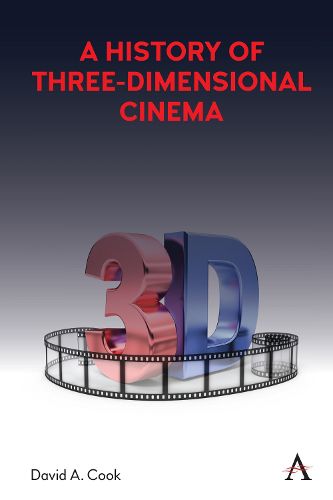Readings Newsletter
Become a Readings Member to make your shopping experience even easier.
Sign in or sign up for free!
You’re not far away from qualifying for FREE standard shipping within Australia
You’ve qualified for FREE standard shipping within Australia
The cart is loading…






A History of Three-Dimensional Cinema chronicles 3-D cinema as a single, continuous and coherent medium, proceeding from 19th-century experiments in stereoscopic photography and lantern projection (1839-1892) to stereoscopic cinema’s long novelty period (1893-1952). It proceeds to examine the first Hollywood boom in anaglyphic stereo (1953-1955), when the mainstream industry produced 69 features in 3-D, mostly action films that could exploit the depth illusion, but also a handful of big-budget films-for example, Kiss Me Kate (George Sidney, 1953) and Dial M for Murder (Alfred Hitchcock, 1954)-until audiences tired of the process; the anaglyphic revival of 1970-1985, when 3-D was sustained as a novelty feature in sensational genres like soft-core pornography and horror; the age of IMAX 3-D (1986-2008); the current era of digital 3-D cinema, which began in 2009 when James Cameron’s Avatar became the highest-grossing feature of all time and the studios once again stampeded into 3-D production; and finally the future promise of Virtual Reality.
$9.00 standard shipping within Australia
FREE standard shipping within Australia for orders over $100.00
Express & International shipping calculated at checkout
Stock availability can be subject to change without notice. We recommend calling the shop or contacting our online team to check availability of low stock items. Please see our Shopping Online page for more details.
A History of Three-Dimensional Cinema chronicles 3-D cinema as a single, continuous and coherent medium, proceeding from 19th-century experiments in stereoscopic photography and lantern projection (1839-1892) to stereoscopic cinema’s long novelty period (1893-1952). It proceeds to examine the first Hollywood boom in anaglyphic stereo (1953-1955), when the mainstream industry produced 69 features in 3-D, mostly action films that could exploit the depth illusion, but also a handful of big-budget films-for example, Kiss Me Kate (George Sidney, 1953) and Dial M for Murder (Alfred Hitchcock, 1954)-until audiences tired of the process; the anaglyphic revival of 1970-1985, when 3-D was sustained as a novelty feature in sensational genres like soft-core pornography and horror; the age of IMAX 3-D (1986-2008); the current era of digital 3-D cinema, which began in 2009 when James Cameron’s Avatar became the highest-grossing feature of all time and the studios once again stampeded into 3-D production; and finally the future promise of Virtual Reality.